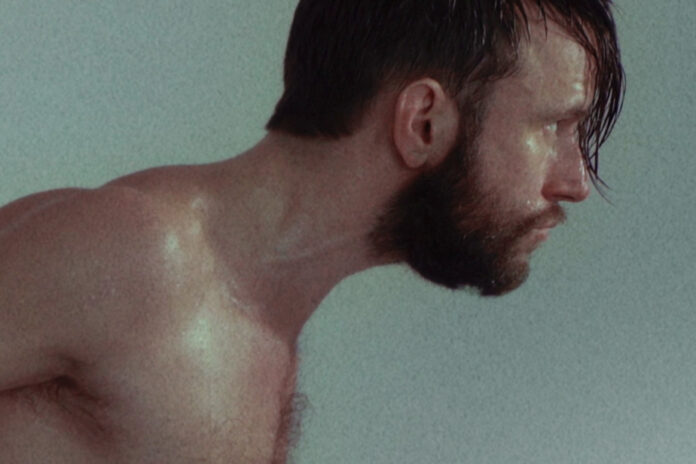Francis Ducharme who embodies the myth of the tragic hero, with a staging by Brigitte Haentjens and choreography by Catherine Gaudet. This is an evening full of promises, we say to ourselves…
Francis Ducharme’s talent as a performer, his vibrant intensity, his incandescent magnetism are well established. But with Mains moisites, where, despite what is announced, he goes it alone (according to the program of the evening, he signs the choreography, the staging, the lighting and, in a short word, Brigitte Haentjens and Catherine Gaudet claim to have left him the reins of this creation), he obviously wanted to wipe the slate clean, to push the limits. All limits. Those of the fourth wall, of the conventions of representation, of what the public and the milieu could expect of him.
Those who venture into the arena of this spectacle will be destabilized, perplexed, even provoked, and will perhaps want, if art bores them, as indicated by the panel held by Ducharme in the final scene which unfolds outside the theater, to spit on him!
What is art, theater, and how can they exist if we deprive them of all their trappings? These are, perhaps, the questions that Ducharme poses with this proposal which has the clear intention of shattering the boundary between the public and the artist, and of questioning the very concept of the show.
The public enters the empty enclosure of the Espace Orange of the Wilder Building. The lighting is crude, there are no chairs. Ducharme – all smiles, hello! – scans the tickets of people who enter, do not know where to stand. Some sit on the ground.
Around, Post-its stuck to a beam, a few scattered accessories; François Marceau is installed in the control room near the entrance and will play, on the instructions of the performer, a few musical segments, the sound design of which was done in collaboration with Tomas Furey. A documentarian, Gabriel-Antoine Roy, follows Ducharme with his camera. Ducharme, who is holding a bowl with pieces of paper; you have to understand, a spectator stands up. ” Square ! he exclaims. There he is tracing a large square on the ground with pink adhesive tape, across the people who have naturally gathered in a similar shape. So here is the scene! Ducharme takes out chairs, begins to unfold them, people grab them. And then he opens a curtain, the stands appear, and voilà! Everyone is settled in, the show can begin!
What a spectacle, some might say? That’s a good question. “I don’t know what will happen tonight. I have nothing and everything prepared. Everything is to be invented. It’s just you and me and this invisible thread that connects us. I am the container. You are the content. Is there a difference? », writes Ducharme in the program. Indeed, who is the object of this representation: the performer, or the audience, who watches itself watching Ducharme? Ducharme who, in the end, spends a good time unfolding chairs, taking chairs, moving chairs (real or invisible), putting down chairs, with more and more abruptness?
This thread, Ducharme searches for it, breaks it, twists it, gets tangled up in it. Her visceral screams give goosebumps; at times, the desperate momentum of her body captivates and moves us, but we also laugh with unease and perplexity in front of this radical proposition, to say the least, which veers into absurdity. Regardless, we follow him as he dances along the edge of the ravine, one foot hanging in the air, wondering, with some trepidation, how far he’s going to take us!
The show looks different every night. Francis Ducharme, as conductor, modulates his presence and his actions according to the feelings of the moment, and the bond he feels with the public. Will he, tonight, give someone a big hug in the stands, climb the walls, rip his sweater, bring a marching band into the room? Hard to say. What is certain is that this show is not what we expected. And that the leap into the void that Ducharme makes is not only dizzying, but requires a form of courage that borders on madness.















